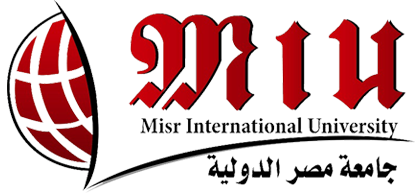ALS
View me
ARC
View me
BUS
View me
CSC
View me
DNT
View me
ECE
View me
MCM
View me
PHR
View me
Recent Submissions
Effect of blood contamination and change in pH on bioactivity of two different bioceramic materials : (An in-vitro study) /
Salman, Eman Sayed Ibrahim,; Supervisor : Abeer Hashem Mahran, Ahmed Adel Ibrahim Khalaf. Includes Arabic Summary.
Development of advanced analytical methods for pharmaceutical analysis /
Aboueisha, Mahmoud Hamed Ahmed,; Supervisor : Fotouh R. Mansour, Samy Emara. Includes Arabic Summary.
Influence of increasing speed on cyclic fatigue resistance of two different rotary NiTi files : (In-vitro study) /
Basilious, Lina Shokry Kamel,; Supervisor : Abeer Elgendy, Manar Mohamed Galal. Includes Arabic Summary.
The impact of using bionic font in speech-to-text Tools on the accuracy of English into Arabic interpretation /
Elhefny, Rawan Hesham,; Supervisor : Bahaa eddin M. Mazid, Ingy Farouk Emara. Includes Arabic Summary.
Consecutive interpreting (CI) requires significant cognitive effort, with interpreters juggling
listening, note-taking, and verbal output in real time. This study investigates whether the Bionic
Reading font, designed to enhance reading efficiency, could reduce cognitive load and improve
accuracy in Arabic CI tasks. It aims to determine whether the Bionic Reading font could optimize
the user experience of Speech-to-Text (STT) tools, leading to reduced cognitive load and improved
CI accuracy. A quasi-experimental design is used, with participants (n=5) engaging in an
interpreting task under both font conditions. Pre- and post-test questionnaires evaluates readability,
processing speed, comprehension, comfort, interpreting accuracy, cognitive load, and font
preference. Performance is further analyzed using Daniel Gile’s Effort Model, which provided a
framework for assessing cognitive strain, and through Errors, Omissions, and Infelicities (EOI)
analysis, which offers a systematic means of evaluating interpreting quality. The findings infoms
the development of user-friendly STT tools with customizable font options, offering practical
implications for enhancing communication accessibility and effectiveness, and laying the
groundwork for further exploration of this technology’s potential across languages.
An Open Architecture for Enterprise SD-WAN Networks /
Elwakil, Mohamed Ahmed Samy Mohamed,; Supervisor : Samy El-Hennawey, Ayman M. Bahaa-Eldin, Mohamed A. Sobh. Includes Arabic Summary.
Quality assessment of ChatGPT and Gemini English into Arabic translation in the domain of climate change : A comparative study /
El-Outify, Yara Tarek,; Supervisor : Mustafa Riad, Maha Fathi, Hanan Sharaf El-Dine. Includes Arabic Summary.
Fracture resistance of zirconia versus PEEK implant supported cantilever fixed partial denture with two span Lengths : (An in vitro study) /
Shedid, Roshan Mohamed Tarek,; Supervisor : Hesham Katamish, Rana Sherif. Includes Arabic Summary.
New methods for the selective determination of active pharmaceutical ingredients /
Saber, Yomna Ayman,; Suoervisor : Samy El- Sayed Sayed Ahmed Emara, Fotouh Mansour, Noha Ibrahim. Includes Ararbic and English Summary.
Digital radiographic assessment of the shaping ability of A contemporary rotary system in curved root canals using two different torque settings /
Helmy, Omar Mohamed Nader Hassan,; Supervisor : Nihal Ezzat Sabet, Mohamed Nabeel. Includes Arabic Summary.
Conventional versus digital measurements of marginal and internal fit of milled interim restorations :| (An In-Vitro study) /
El Attawy, Ahmed Mohamed,; Supervisor : Tamer Elhamy Shokry, Yara Sayed. Includes Arabic Summary.
